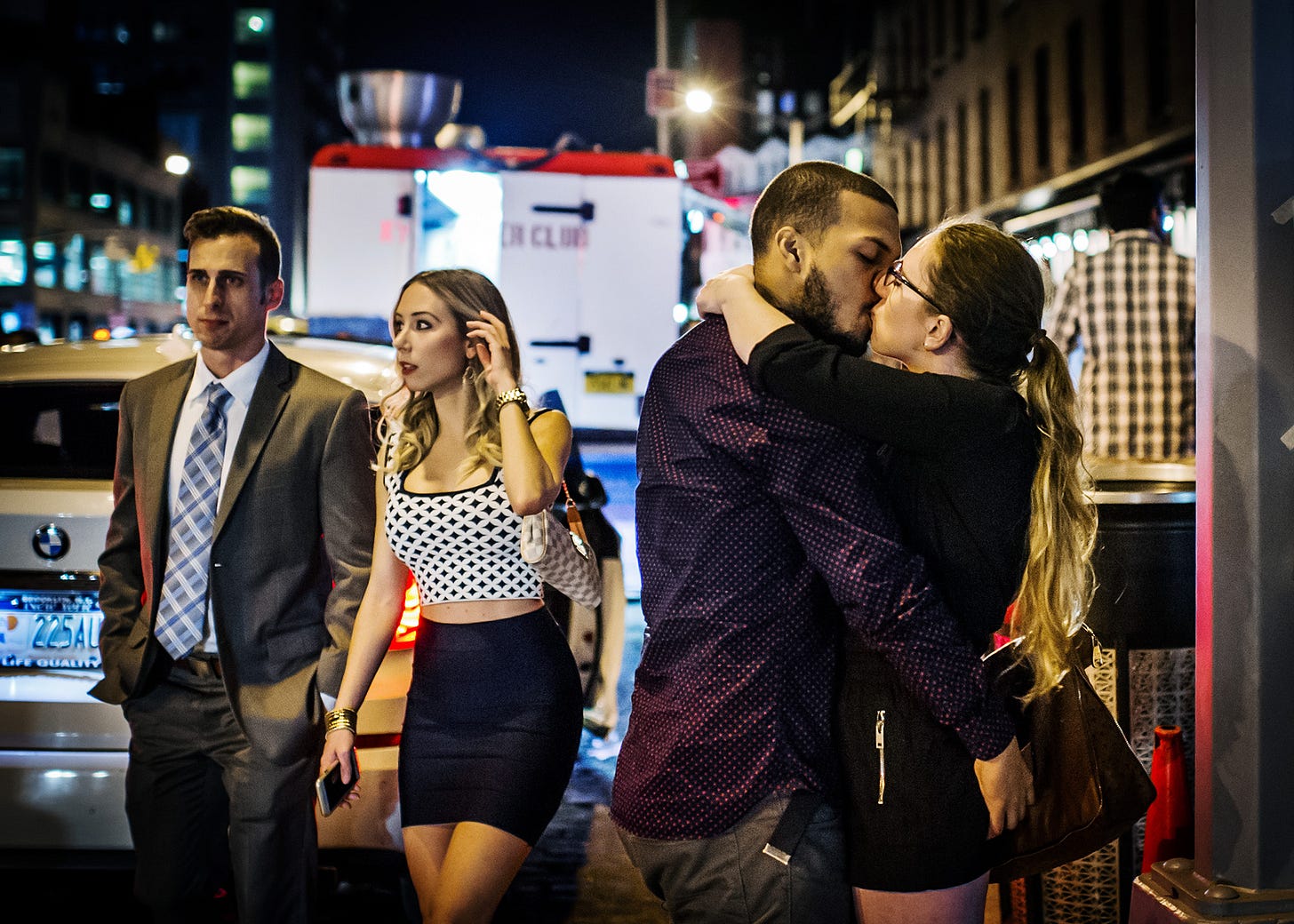Introvert's Guide to Street Photography — Photographing Strangers
Tips and tricks for photographing strangers.
Welcome to In the Flash, a weekly, behind-the-lens dialogue on photography. To join the conversation
My social phobia kicked in when I was about 14 years old. An unfortunate combination of puberty, badly spoken English, and sudden weight gain (an émigré from the Soviet Union discovering pizza! soft drinks! & hot pockets!!) will do that to you. Most public encounters were an excruciating ordeal. One time, I fainted in front of my classmates during a presentation. I never went to prom.
When, 15 years later, I decided to become a documentary photographer, social anxiety remained the biggest hurdle. How do you photograph people if you are afraid of them?
My first street images were mostly of sleeping people and side shots taken with trembling hands. I thought they were poetic. Bruce Gilden, infamous street photographer and my mentor, thought otherwise. He immediately recognized them as evasive and timid. I can't quite recall if he used the word "trash" or I imagined it in my hazy moment of defeat, but I do remember I cried. Defensively, I whipped out the social phobia card expecting sympathy. What I got was possibly the best advice of my career. "Who cares?"
"You either get over it or get out of the game." Bruce never minced words.
For the next few weeks, I was hysterical and despondent, working on the epitaph to my nascent photographic career. If only, like many skittish introverts, I liked to shoot landscapes. But the only reason I got into photography was to satisfy my intense curiosity about human behavior. The camera was my passport to participation in social life that I so desperately wanted to be a part of. Giving up would have been tremendously anticlimactic.
I decided I had no choice but to get over it.
That took me about a decade.
Photographing people who are unaware of being photographed is tricky. The challenge is to avoid those covert side angles without being so obvious as to alert the subject. If the latter happens, the situation switches from candid to evasive/confused/angry or, my least favorite, posed (if you ever meet me on the street and want to avoid having your picture taken, give me a thumbs up and a smile). The kind of photos I wanted to make — both unposed and in-your-face — required me to position myself squarely in the person's view. Initially, just the thought of such a setup made me feel queasy. However, the key to success lies in finding the right recipes for every conundrum. In my case, the specific recipe turned out to be half a Xanax and two shots of bourbon.
Setting out to photograph in the Meatpacking District, I came prepared. The beginning of the night was usually spent pacing, observing, gathering up my courage, and waiting for the anti-anxiety pill to kick in. That first picture was always the hardest. A jolt of handshaking adrenaline flooded through the body, disorienting and then refocusing the mind. Fortified by a drink from my flask, I continued to photograph strangers as excitement replaced any lingering fear. By the end of each night, my social anxiety flattened into a distant memory.
Over the course of three summers shooting in Meatpacking, I concocted a few rules for making candid images without being noticed. If you have any ethical issues with sneaky street photography, you should probably stop reading here.







